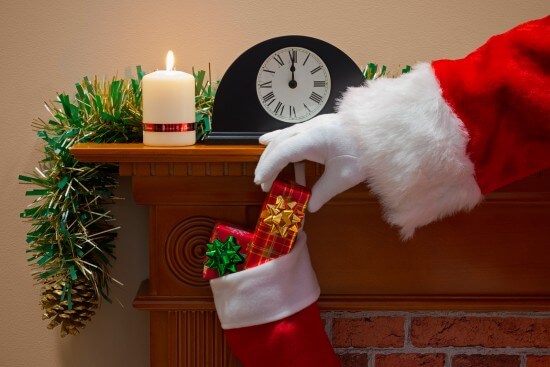
The making of Santa Claus as he is today can be somewhat credited to the Protestant Reformation. However, long before the Protestant Reformation ever happened a man named St. Nicholas lived and blessed the lives of many with his generosity. It is because of this saint we celebrate Santa Claus at Christmas. However, let’s take a look at the making of Santa Claus out of a living Saint.
St. Nicholas was a Catholic saint who was very celebrated. His feast day was Dec. 6th. On this day someone dressed up, would come and give gifts at the feasts, and there was a big party.
After the Protestant Reformation in the sixteenth century, the feasting and veneration of Catholic saints was banned. However, many people really enjoyed the annual visit from their gift-giving saint and didn’t want to forget the purpose of the holiday.
In order to not forget it, but still follow the ban, in some countries, the festivities of St. Nicholas’ Day were merged with Christmas celebrations, and the gift-bearer took on new, non-religious forms. However, he still was inspired by the saint’s generous spirit.
However, with this came a very varied Santa. In Germany, he appeared as Weihnachtsmann, in England as Father Christmas, and in France, as Pèrè Noël, who left small gifts in the children’s shoes. Along with each of these came a set of traditions, folklore, and other things that fueled the image which later became Santa Claus.
Some areas of the world still celebrated St. Nicholas as the gift-bearer, but created a host of other characters to be his assistants. Some of the most famous of these attendants, or gift bearers themselves were Knecht Ruprecht and the Belsnickle. These two helpers were somewhat scary, as not only would they help to reward good children but also to reprove children who were naughty and couldn’t recite their prayers. This is where the idea of the naughty and nice list sprang from.
Knecht Ruprecht was also known as Black Peter (so called because he delivered the presents down the chimney for St. Nicholas and became blackened with soot). And later, in some places the ideas of St. Nicholas and Knecht Ruprecht merged to form Ru Klaus, meaning Rough Nicholas.
The Dutch immigrants that came to America celebrated the feast day of St. Nicholas, but called him Sinter Klaas. With this celebration was the tradition of giving gifts to children, feasting, and leaving out something for the saint.
From there you see an American influence. A paper reported on the Dutch celebration citing the St. A Claus. Then, in 1809 Washington Irving wrote about the celebration of St. Nicholas (which was held Dec. 6th), and all the folklore and customs that went with it.
Later in 1823 a man named Clement Moore, who knew European folklore well, created a combined image of many stories of deities, saints, and elementals to create a jolly old elf. Later Thomas Nast drew a depiction including elves, and a workshop. Norman Rockwell drew his depiction for the Saturday Evening Post, and more of the life of Santa was added, until finally Coca Cola did an advertising campaign and their artist drew the Santa we recognize today.
The making of Santa comes from an accumulation of pagan and Christian beliefs, folklore, deities, elementals, and the efforts of marketing campaigns. So now, instead of a living, breathing saint who helps the poor, we have a spirit, an image, of a jolly man who rewards good behavior, and brings joy to many at Christmas.